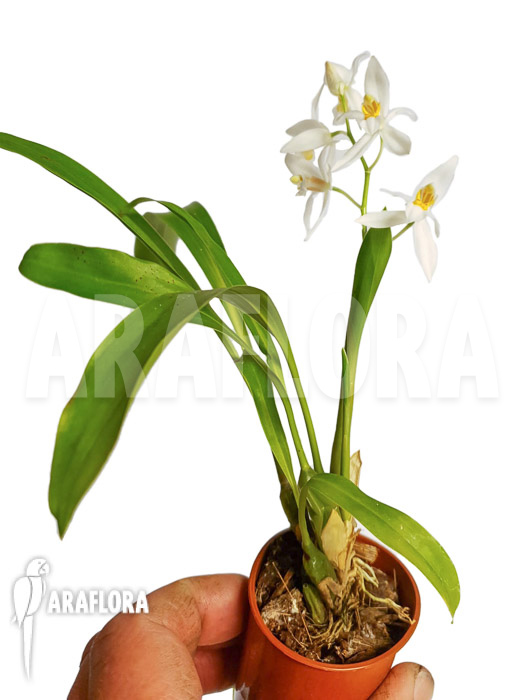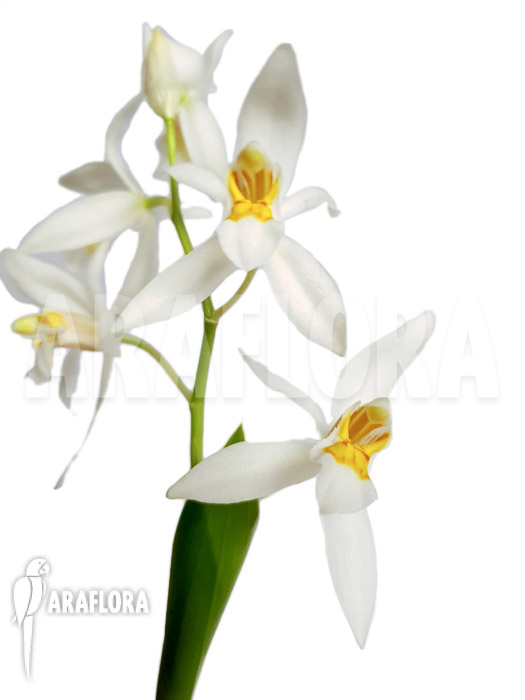Coelogyne nitida - Orchid589a
Coelogyne nitida - Orchid589a
Coelogyne nitida is a medium sized orchid from mountainous areas in the Himalayas. This plant could produce bright white flowers with a golden core. It is grown in cool greenhouses or with some special care indoors.
Currently not in stock
€ 18,00
Keep me up to date?
Araflora will inform you as soon as the product is available again. Please fill in your e-mail address and we will let you know as soon as the product is back in stock. You will get an e-mail message when the product is available again. Unfortunately we cannot say how long this will be or what the price is likely to be.

Receive an e-mail when new stock of this plant arrives.
Share this plant? Press on one of the following icons.
Coelogyne nitida is a plant species from the orchid family. This plant produces slender, wrinkled pseudobulbs that could grow up to a maximum length of 10 cm. From every pseudobulb, two lanceolate to egg-shaped leaves with eight prominent nerves arise. This orchid flowers mostly in spring, together with the growth of a new pseudobulb. The plant creates a pendant flower stalk, reaching a maximum length of around 20 cm, carrying up to 8 flowers. The flowers open simultaneously. They have a bright white color, with a golden to yellow colored core, including main parts of the labellum. The scent is somewhat musky. Propagating this orchid is mainly done by separating older plants. Make sure every division contains at least three pseudobulbs.



Coelogyne nitida grows naturally on mossy rocks and tree branches in mountainous areas. It occurs between 1300- and 2600-meter altitude and should be grown in cool conditions. Pot this plant in an airy mix for epiphytes or orchids. From spring to summer, this species should be kept wet and in bright light conditions. Allow for excellent ventilation. It is possible to keep this species outside in these seasons. In the growing season, fertilize this orchid once every two weeks with special orchid fertilizer, according to recommended dosage. In winter, this species should be kept in a cool, bright space. Only water the plant a bit when completely dried out. It is also possible to just mist occasionally. During the rest period, fertilizer should be avoided.







 6 cm
6 cm
 7 cm
7 cm












